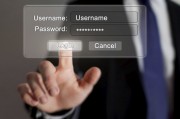
Data Masking could have helped prevent recent, high-profile destructive cyber attacks.
San Ramon, CA, December 9, 2014 (Newswire.com) - How?
By scrambling or removing sensitive data from production and non-production systems, Data Masking can prevent compromised privileged user account information from being used to gain access to sensitive data such as Social Security Numbers.
"I'm consistently amazed that more organizations haven't implemented Data Masking or Two-Factor Authentication."
Greg Wendt, Executive Director, Security Solutions and Services
Greg Wendt, GreyHeller’s Executive Director of Security Solutions and Services, said “I’m consistently amazed that more organizations haven’t implemented Data Masking or Two-Factor Authentication.”
Cyber criminals using compromised privileged user account information to access databases would not be able to actually see the data had it been masked.
Further, combining Two-Factor Authentication with Data Masking would impose even tighter security on that sensitive data, ensuring that access only occurs once the Two-Factor Authentication challenge was successfully passed, often with an SMS message or secure ID token.
According to Mr. Wendt, “privileged user access is a huge threat vector that can be properly managed with masking and Two-Factor Authentication.”
Privileged users are often defined as systems and database administrators in the information technology department who maintain systems and databases that contain sensitive information.
GreyHeller’s software product – ERP Firewall – contains powerful Data Masking and Two-Factor Authentication capabilities and is used by major commercial and higher education institutions to protect their sensitive data from cyber attack.
Share:
